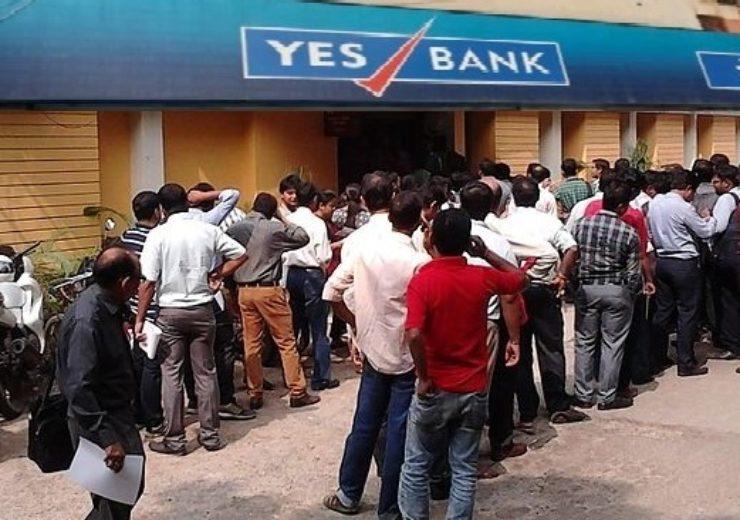Why Have Indian Banks Become Financially Fragile?

The crisis at Yes Bank is only the concentrated expression of a deeper malaise afflicting the Indian banking system as a whole, namely its vastly increased financial fragility. The chief economic advisor is no doubt right when he assures depositors, through the media, that the Indian banking system is quite stable; but this still does not negate the fact that it has become more fragile. Congress is no doubt right in claiming that the crisis of Yes Bank is because of a phenomenally rapid increase in its loans over the last five years, from Rs 55,633 crore in 2014 to Rs 2,41,499 crore in March 2019, and in particular over the two-year stretch, March 2016 (when it was Rs 98,210 crore) to March 2018 (when it became Rs 2,03,534 crore). And there is also no doubt that this loan spree is associated with “crony capitalism”, i.e., among the prominent beneficiaries of such loans are the prime minister’s “crony capitalists”.
But while all this is true, remaining confined only to this level of analysis is not enough, because it obscures a deeper problem relating to the very nature of a neoliberal economy, namely that such an economy necessarily and inevitably makes the financial system more fragile by increasing over time the riskiness associated with the portfolios of financial institutions. In fact, the only way that a boom can be sustained in such an economy is through the adoption of measures that make the financial system fragile. So when the question is asked: what was the Reserve Bank doing when Yes Bank was on its loan-giving spree, the answer is not that it was just sleeping, but rather that it was turning a blind eye to this spree—as was every other watch-dog in the economy—in a bid to keep the growth-rate up.
A major hall-mark of a neoliberal economy is that fiscal policy cannot be used to usher in or sustain a boom. This is because such an economy, under pressure from globally-mobile finance capital, is forced to keep its fiscal deficit in check as a percentage of GDP. Indeed, most neoliberal economies, including India, have legislations on their statute books that put a ceiling on their fiscal deficit at 3% of GDP. Of course, even if the fiscal deficit is not widened, a boom can still be sustained by shoring up aggregate demand, and as it begins to flag, by increasing government expenditure, and financing it by taxing capitalists (who save a large proportion of their incomes unlike the workers who spend most of it). But this again is anathema for finance capital and hence ruled out. Fiscal policy in a neoliberal economy therefore becomes “pro-cyclical” rather than “anti-cyclical”. This is in the sense that when the economy is on a downward slide, fiscal policy, far from reversing such a slide, contributes further towards it.
Also watch: How Yes Bank Became No Bank
Hence, the only instrument available for preventing such a slide, and sustaining the boom, is monetary policy. And its modus operandi is by giving out larger and larger loans of “lower quality”, in the sense of involving higher risk. To enable financial institutions to do so, the interest rates are often lowered. This is what Alan Greenspan had done to keep the boom going, when he was the chairman of the Federal Reserve Board in the US and the “dotcom bubble” was ending. In India, however, quite apart from using interest rates, the government often directly encourages banks to give loans involving higher risks to sectors like infrastructure, which also include real estate projects, on the plea that they deserve high “priority”. For public sector banks, such interference is direct; in the case of private sector banks such as Yes Bank, which are ambitious go-getting entities anyway, it takes the form of implicitly encouraging them by turning a blind eye to their loan-giving sprees.
This is what keeps the boom going, even as the portfolios of the banks become more and more fragile. This latter phenomenon is a necessary accompaniment of the former, a necessary price to pay for it. In India, it is clear that substantial loans were made—under government initiative—to private corporate borrowers for infrastructure projects, to keep the growth rate going, which lowered the “quality” of banks’ assets. This lowering was further aggravated, as aggregate demand flagged despite such loans, for exogenous reasons such as sluggish exports.
The American economist Hyman Minsky had argued that such growing financial fragility characterises all capitalist booms. This characteristic, however, is especially true of booms under neoliberal capitalism because the use of fiscal policy for shoring up demand is ruled out.
Also read: Economy Sliding into Serious Stagnation but Modi & Co are Clueless
Suppose, for instance, that we were not under a neoliberal capitalist regime, but under a dirigiste regime (where the state exerts a strong directive influence over investment). Then, instead of private corporate players undertaking such infrastructure projects to shore up demand, the government would have done so and used a fiscal deficit, covered by bank loans, to finance them. In the portfolio of banks then, government borrowings would have figured on the asset side instead of private borrowings. This, however, would not have lowered the “quality” of the banks’ assets, since borrowings by the government, which has the sovereign power to raise taxes, do not entail any higher risks as their amount increases. In a regime of dirigisme, therefore, shoring up aggregate demand through larger government expenditure financed by a fiscal deficit would not have increased the fragility of banks, as it does under neoliberal capitalism.
The fact that the “quality” of bank assets deteriorates in the course of a boom in a neoliberal capitalist economy was underscored by the 2008 financial crisis in the US and other advanced capitalist economies. The housing bubble which had preceded the crisis had been sustained precisely through a large-scale infusion of credit, which, from the point of view of banks, was through loans of increasingly dubious quality, though this fact was camouflaged for the time being by the speculative build-up in house-prices (which banks should have seen through).
Many have been critical of those banks for having gone on lending and thereby, sustaining the housing bubble. What they miss, however, is that if the banks had been more circumspect and ceased to give loans for sustaining the bubble, then the boom itself would have come to an end sooner than it did, and that mass unemployment would have visited the United States economy, and those of other advanced countries, even sooner than it did. In other words, they miss the structural features of the neoliberal economy, merely to blame individual bankers.
Also watch: Shakespearean Tragedy at Yes Bank
An exactly similar scenario is being played out in India. While putting the blame for the Yes Bank crisis on its owner who no doubt lent recklessly, most commentators miss the point that not doing so on his part, and also on the part of other bankers, would have precipitated mass unemployment and economic crisis even earlier than when they actually occurred.
To say this of course is not to condone the fact of the depositors’ money being exposed to such high-risk loans. It is rather to suggest that to believe that the depositors’ money would be safe within a regime—where banks have to give such high-risk loans at the behest of the government in order to keep the boom going and avert a crisis—is a chimera. It is not the question of banks behaving one way or the other within a neoliberal capitalist economy that is of significance; the point at issue is the neoliberal capitalist economy itself. Within such an economic system, either the banks have to keep giving loans of increasingly dubious quality (to keep the boom going) or rein in such loans out of greater prudence (in which case the boom comes to an end even earlier, bringing in its wake a financial crisis that afflicts all the banks together).
The hegemony of neoliberal economics prevents most commentators from seeing this fact. This is why they see the Yes Bank crisis in isolation and blame it entirely on a history of reckless lending.
Get the latest reports & analysis with people's perspective on Protests, movements & deep analytical videos, discussions of the current affairs in your Telegram app. Subscribe to NewsClick's Telegram channel & get Real-Time updates on stories, as they get published on our website.
























